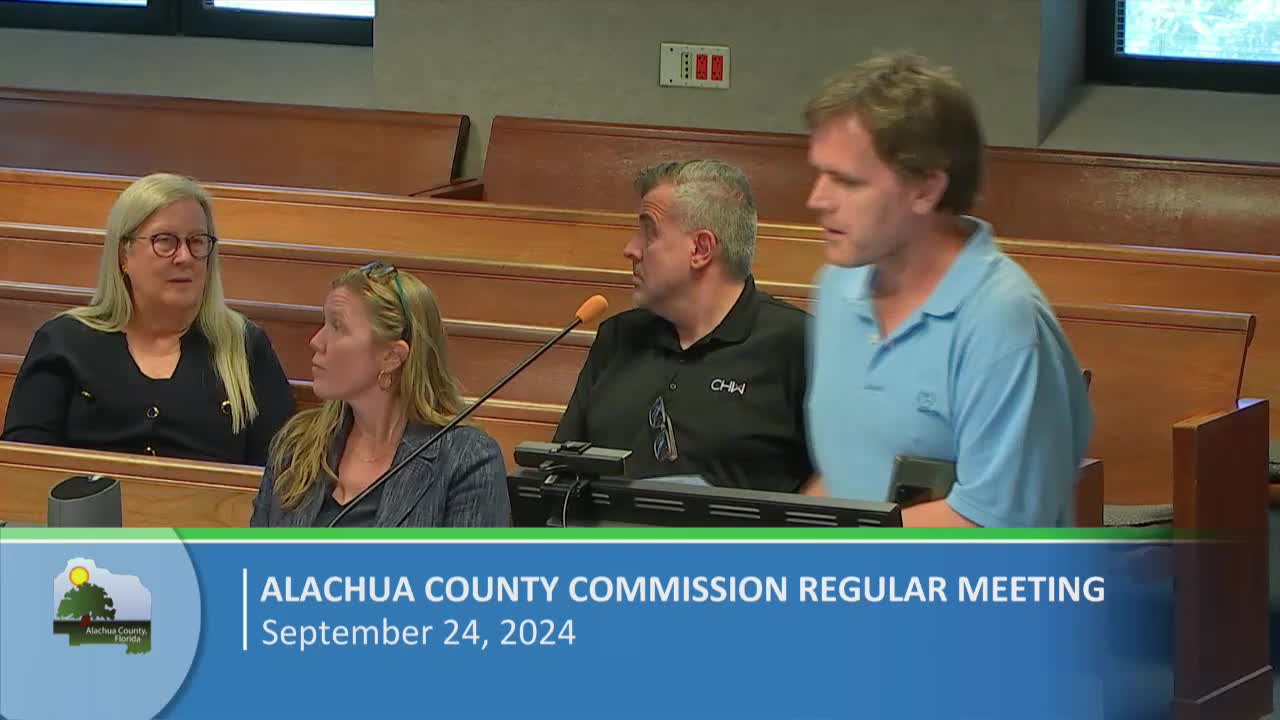Trees Linked to Significant Drop in Heart Attack Rates
September 24, 2024 | Alachua County, Florida
This article was created by AI summarizing key points discussed. AI makes mistakes, so for full details and context, please refer to the video of the full meeting. Please report any errors so we can fix them. Report an error »

A recent government meeting highlighted the promising results of a study conducted in Saint Louis, which examined the impact of urban tree canopies on public health, specifically heart attack rates. Initiated in 2018, the ambitious program involved planting large trees across neighborhoods that previously lacked greenery and had elevated heart attack rates.
The study utilized a randomized controlled trial design, comparing areas that received new tree plantings to those that maintained their existing conditions. Over six years, researchers recruited volunteers to track biological markers associated with heart attack risks. The findings revealed a statistically significant reduction in heart attack risk and overall mortality, estimated between 10% to 15%, attributed to the newly established tree canopies.
Given that heart disease remains the leading cause of death in the United States, claiming approximately 600,000 lives annually, these results suggest that increasing tree canopy in urban environments could serve as a vital public health strategy. The meeting underscored the importance of integrating green spaces into city planning, as demonstrated by contrasting examples of urban development—some areas thriving with mature trees while others, like the Oakmont subdivision, fell short in incorporating adequate greenery.
The discussion emphasized the potential for urban forestry initiatives to not only enhance the aesthetic appeal of neighborhoods but also contribute significantly to the health and well-being of residents.
The study utilized a randomized controlled trial design, comparing areas that received new tree plantings to those that maintained their existing conditions. Over six years, researchers recruited volunteers to track biological markers associated with heart attack risks. The findings revealed a statistically significant reduction in heart attack risk and overall mortality, estimated between 10% to 15%, attributed to the newly established tree canopies.
Given that heart disease remains the leading cause of death in the United States, claiming approximately 600,000 lives annually, these results suggest that increasing tree canopy in urban environments could serve as a vital public health strategy. The meeting underscored the importance of integrating green spaces into city planning, as demonstrated by contrasting examples of urban development—some areas thriving with mature trees while others, like the Oakmont subdivision, fell short in incorporating adequate greenery.
The discussion emphasized the potential for urban forestry initiatives to not only enhance the aesthetic appeal of neighborhoods but also contribute significantly to the health and well-being of residents.
View full meeting
This article is based on a recent meeting—watch the full video and explore the complete transcript for deeper insights into the discussion.
View full meeting